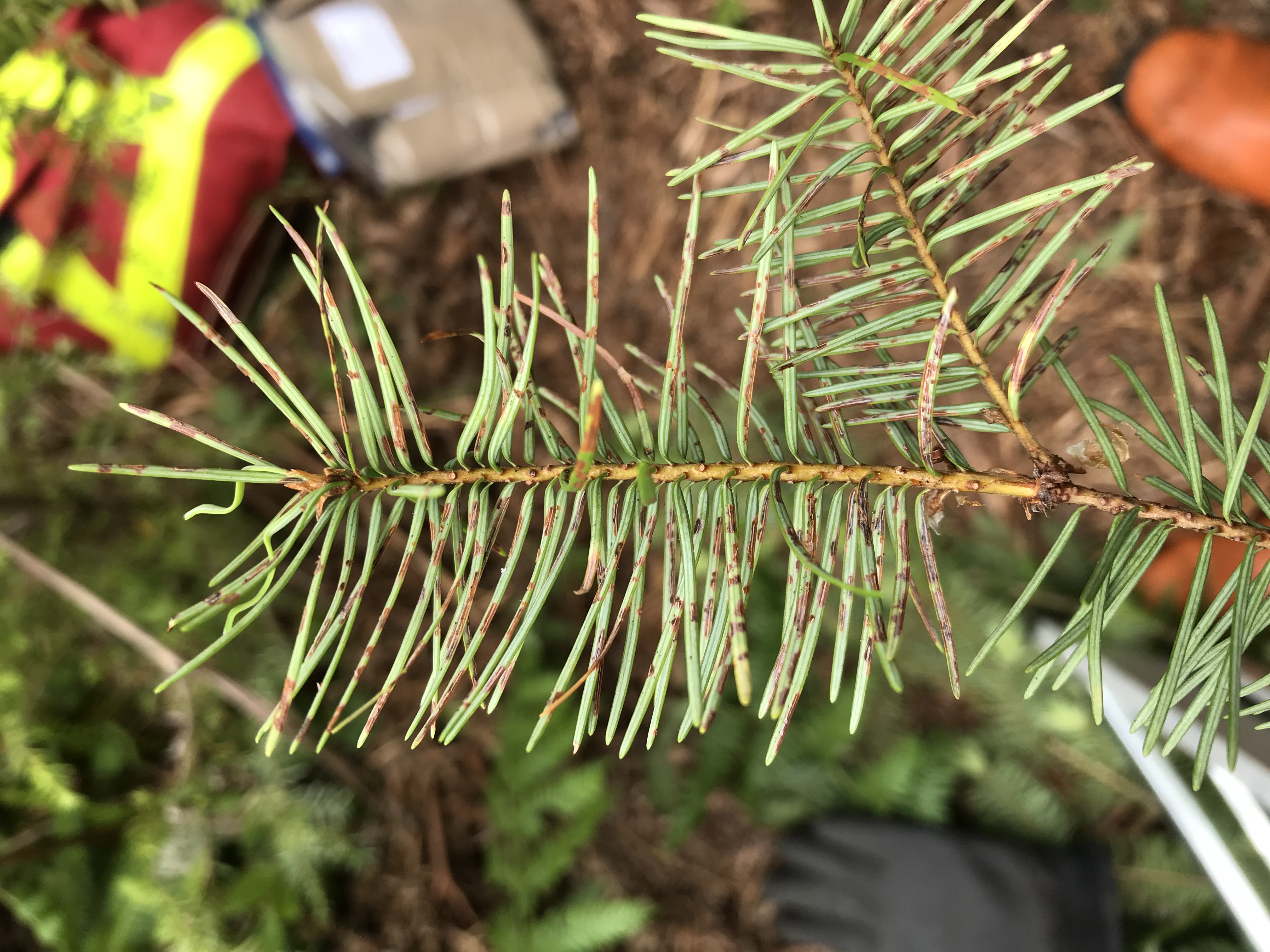Rhabdocline needle cast
Rhabdocline needle cast is a foliar needle disease of Douglas-fir (Pseudotsugae menziesii) caused by the pathogen Rhabdocline pseudotsugae. The disease occurs throughout British Columbia on both interior and coastal varieties of Douglas-fir. Christmas tree plantations have often suffered the most damage from this disease.
Description
Rhabdocline infections on the current year's growth appear as yellow, coloured blotches on needles in early spring to early summer. Disease progression accelerates through the summer with the blotches resulting in reddish-brown fruiting bodies. Spores are released from these fruiting bodies to infect the newly formed needles of the current year's growth. The infected needles are asymptomatic and remain attached to twigs and branches through the winter and in the spring the cycle repeats to infect the newly forming needles. Spore release is dependent on moisture available through high humidity, dew or rainfall. Once spore release has occurred affected needles are dropped.
Management
Rhabdocline does not complete its disease cycle in fallen needles or in foliage on cut branches. Therefore sanitation by cutting diseased lower branches and severely affected branches can contribute to disease suppression in plantations.
Cultural control methods used in forest nurseries and Christmas trees plantations, such as minimizing prolonged periods where foliage is wet and providing adequate tree spacing have been shown to reduce disease pressure. However, these methods are not feasible within a forest stand or at the landscape level.

Rhabdocline on Douglas-fir with fruiting bodies that are visible as irregular-shaped brown spots on the needles.
Contact information
Contact us if you have questions about Rhabdocline in British Columbia.
